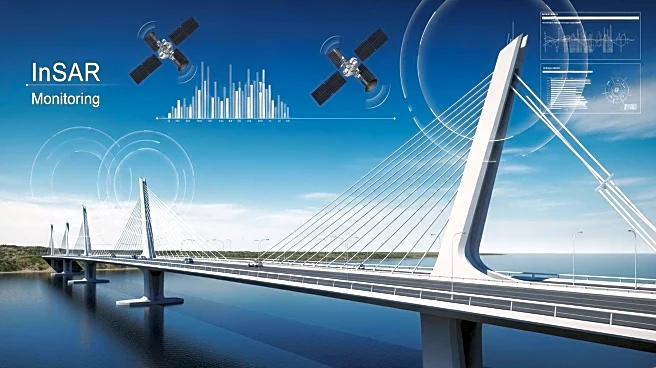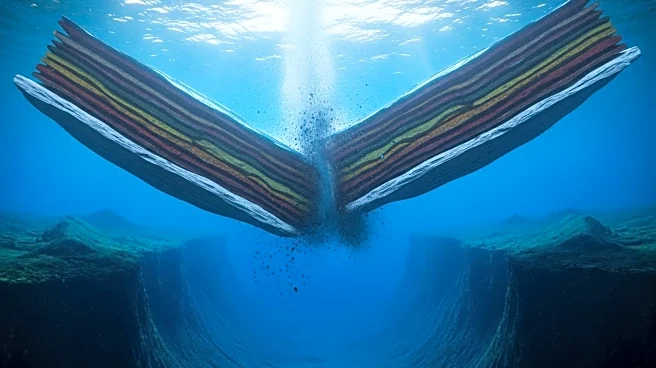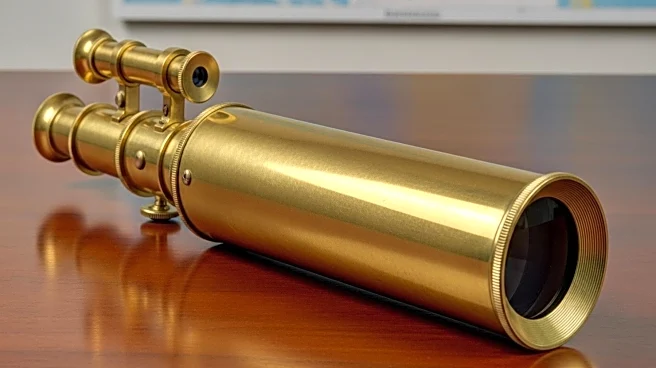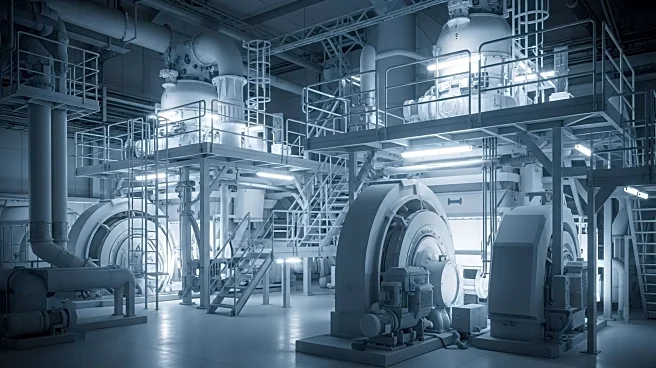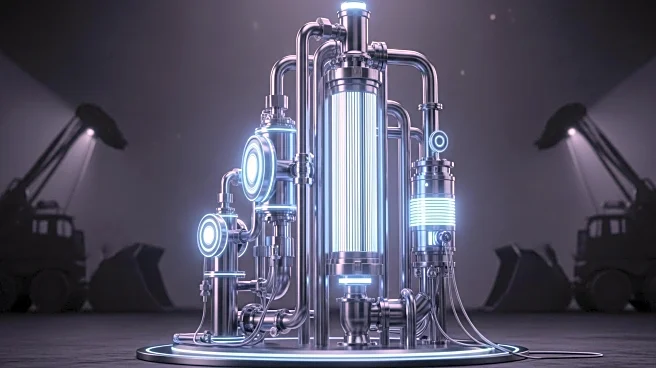What is the story about?
What's Happening?
A new methodology for assessing geo-hazard risks to long-span bridges has been developed, incorporating both Structural Health Monitoring (SHM) sensors and spaceborne monitoring using MT-InSAR technology. This approach evaluates subsidence and landslide hazards, exposure, and structural vulnerability, providing a comprehensive risk assessment. The methodology was applied to a global database of long-span bridges, revealing significant insights into the suitability of these structures for space-based monitoring. The study highlights the potential of MT-InSAR as a complementary tool for structural evaluation, especially given its worldwide availability. The analysis showed that over half of the bridges in the database were densely populated with Persistent Scatterers (PSs), although effective monitoring potential decreased due to reduced Sentinel-1 data availability following the failure of one of its satellites.
Why It's Important?
The development of this methodology is crucial for enhancing infrastructure resilience globally, particularly in regions lacking SHM sensors. By integrating spaceborne monitoring, stakeholders can gain improved confidence in assessing bridge structural conditions, which is vital for prioritizing maintenance and inspection resources. The study indicates that North American and African bridges are in poor structural condition, correlating with their age and lack of SHM sensors. Employing MT-InSAR can provide valuable data for these vulnerable structures, potentially reducing risk and improving resilience. This approach supports Sustainable Development Goals (SDG) by promoting equitable access to monitoring technologies and enhancing infrastructure resilience.
What's Next?
With the launch of Sentinel-1C, comprehensive monitoring capabilities are expected to return, although analysis dependent on temporal datasets will be hindered in the near term due to previous reduced coverage. Future work could explore more comprehensive quantification of how monitoring availability impacts vulnerability assessment, including synergistic effects when both SHM and spaceborne monitoring are available. Additionally, incorporating X-band data or upcoming L-band data from the NISAR mission could extend the risk assessment further.
Beyond the Headlines
The methodology provides flexibility for stakeholders to prioritize inspection resources by adding more accurate information about structural health or sensor availability. It also highlights the importance of considering interdependencies between hazards for more informed decisions, although this requires more complex modeling. The study underscores the global potential of MT-InSAR monitoring as a method capable of providing information about the structural health of bridges worldwide, enhancing infrastructure resilience.
AI Generated Content
Do you find this article useful?
